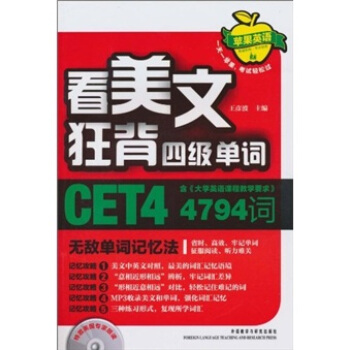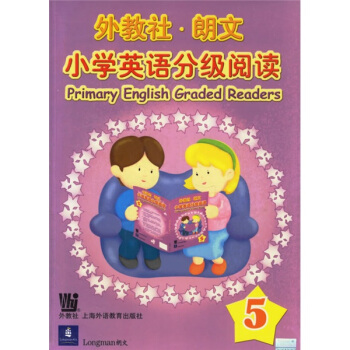

具体描述
内容简介
如何才能够充分调动学生的积极性,使课堂教学富有成效?《如何策划行之有效的英语课堂活动》给出了一百余个课堂教学活动,涉及词汇学习、口语练习、阅读、写作、团队协作以及课堂热身或者课堂放松等各种教学活动。无论是以考试为目的的课程,还是专门的商务英语、旅游英语等培训课程,亦或稳扎稳打的学习类课程,都可以在《如何策划行之有效的英语课堂活动》中找到操作性强、效果显著的课堂活动。信手拈来便可以用之于课堂,《如何策划行之有效的英语课堂活动》无异于英语教师的随身宝典。内页插图
目录
Introduction1 Warm-ups,breaks and fillers 1:Short energisers
Introduction
Seth Lindstromberg
1.1 Chair swapping for names
Tessa Woodward
1.2 One chair missin9
Pierre Jeanrenaud
1.3 Balloon chase
Paul Sanderson
1.4 I say.you do
Tessa Woodward
1.5 Newspaper bash
Jane Revell
1.6 Staccato start
Tessa Woodward
1.7 Singing start
Tessa Woodward
1.8 Computer talk
Denny Packard
1.9 Bizarre riot
Tessa Woodward
2 Warm—ups,breaks and fillers
2.SpeakingIntroduction
beth Llndstromberg
2.1 Bytheway
Seth Lindstromberg
2.2 HOW do you say…
Seth Lindstromberg
2.3 Makethem sayit
Tessa Woodward
2.4 Whatever’S in my bag
Tessa Woodward
2.5 You guess their adjectives
Tessa Woodward
2.6 Think of ten,five,or three things
Tessa Woodward
2.7 Links with music
Clem Laroy
2.8 Aproverb a day
Seth Lindstromberg
2.9 Making stress physical
Tessa Woodward
3 Reviewin9
Introduction
Seth Lindstromberg
3.1 Vocabulary brainshower
Sheila Levy
3.2 Do you know this word?
Hanna Kryszewska
3.3 Recycling
Adriana Diaz
3.4 Student.produced vocabulary reviews
Andrew Glass
3.5 Vocabulary on slips
Sheelagh Deller
3.6 True—false student—student dictation
Sheelagh Deller
3.7 Student—produced reference booklets
Tessa Woodward
3.8 Hidden shape in the puzzle
Adriana Diaz
3.9 Guess who grammar quiz
Denny Packard
4 Communicative pot—pourri
Introduction
Seth Lindstromberg
4.1 The books Oll the shelf
Adriana Diaz
4.2 ETs and earthlings
Adriana Diaz
4.3 Live classroom
Adriana Diaz
4.4 The Tower of Babel
Adriana Diaz
4.5 Two part discussion
Seth Lindstromberg
4.6 Guess my story
Herbert Puchta
4.7 The movies youve seen
Rick Cooper
4.8 A radio drama
Adriana Diaz
4.9 Brothers and Sisters
Clem Laroy
4.10 Stories that share the past
Mario Rinvolucri
4.11 Your life in the cards
Clem Laroy
5 Working with a coursebook
Introduction
Seth Lindstromberg/Peter Grundy/Lindsey Gallaglaer
5.1 Judge the book by its cover (but not only...)
Hanna Kryszewska
5.2 What shall I leave in?
David Cranmer
5.3 Supplementing coursebooks with authentic materials Peter Grundy
5.4 Coursebook recall Hanna Kryszewska
5.5 Personalising coursebooks Steve Gilbride and Peter Grundy
5.6 Stories in your coursebook Hanna Kryszewska
5.7 Reconstructing a patch on a page Seth Lindstromberg
5.8 Alternative coursebooks Lindsey Gallagher and Peter Grundy
6 Using magazines and newspapers Introduction Seth Lindstromberg
6.1Who can take notes best? Hanna Kryszewska
6.2 Meet the demand Hanna Kryszewska
6.3 Thats news to met Hanna Kryszewska
6.4 Spot it!Hanna Kryszewska
6.5 Looking in from outside Mario Rinvolucri
7 Theme texts, affective texts, stories
Introduction
Seth Lindstromberg
7.1 Stories with opposite messages
Mario Rinvolucri
7.2 Flip the frame
Mario Rinvolucri
7.3 Milk bottles and dustbins
Mario Rinvolucri
7.4 Creative criminality
Mario Rinvolucri
7.5 Are you a worthy owner?
Mario Rinvolucri
7.6 Inseparable
Mario Rinvolucri
7.7 Correcting the teller
Giinter Gemgross and Herbert Puchta
7.8 Comparing texts - a person-related way
Peter Grundy
7.9 Discussion from key words
Seth Lindstromberg
8 Writing
Introduction
Seth Lindstromberg
8.1 Be my scribe
John Morgan
8.2 Lyrical letters
Joe Buckhurst
8.3 From novelists to publishers
Adriana Diaz
……
9 Language through literature
10 Music and imagination
11 Not just for business people
12 Grammar and register:practice,reflection,review
Bibliography
Index
精彩书摘
3. In your book, mark where the lesson breaks actually fell as you worked through the unit. Did you have to rush through any activity because of time constraints? Did you spend too much time on one section (mainly to kill time) because you knew you didnt have enough time to get through the following section in the time available in that lesson?4. Look at the unit in your coursebook that you plan to cover next. On the basis of what happened with the unit youve just thought about, see if you can predict: dull bits (texts or exercises your students wont take to), unstimulating lead-ins and uninteresting follow-ons.5. Guess where the lessons breaks will most naturally fall. Sometimes, to avoid rushing through a task you almost (but dont quite) have time for, you should postpone it till the following lesson. However, each time you take this decision, you create a chunk of extra time in the lesson from which an activity has been cut. And this means you will need a filler (or a warm-up).
6. Look through a couple of coursebooks and resource books to see if you can find what you need. (Dont forget to ask your colleagues for tips.) If youre lucky, you may find an activity with aims similar to those of the longer activity you have postponed. Or perhaps your students might in fact best profit from doing a review activity (see Chapter 3). Or perhaps after a long battle with one topic it might actually be more appropriate to change to something completely different.
前言/序言
外研社从剑桥大学出版社出版的“Cambidge Handbooks for Language Teachers”中选出10本,结成“Learning in Doing?剑桥英语课堂教学系列”,在中国大陆出版发行。应外研社要我为这套丛书写一个总序的要求,我通读了全部10本书,同时看了原系列其他书的书名。我发现,在所有这些书都涉及外语教学中的重要问题的同时,编者选出目前这10本来先期出版发行,是有道理的。
首先,从这10本书的书名就可看出,它们都是关于当前外语教学中的一些最关紧要的问题。读这套书的教师朋友们会发现,它们是如此切合我们国家当前外语教学(尤其是基础阶段外语教学)所面临的突出问题,用一句俗语说,它们是如此符合我国的“国情”:大班教学、以学生为中心突出个性化教学、课堂设计、口语教学、词汇教学、如何利用多媒体教学手段等等,方方面面,不一而足。
用户评价
这本书的封面设计挺吸引人的,那种简约又不失专业感的风格,让人一看就知道是那种能带来真材实料的教学参考书。我最近正在琢磨怎么把我的课堂变得更生动一些,尤其是那些感觉学生参与度不高的环节,读完这本书的初印象就是,它似乎提供了一种非常系统和实用的方法论。我特别欣赏作者在阐述理论时,那种既有学术深度又不失一线教师可操作性的平衡感。它不像有些理论书籍那样高高在上,让人觉得遥不可及,反而更像是资深教师手把手地在分享他的“武功秘籍”。我尤其期待看到书中关于活动设计中“真实性”和“趣味性”如何共存的探讨。毕竟,现在的学生对枯燥的练习是深恶痛绝的,如何在完成教学目标的同时,让他们觉得“哇,这个活动真有意思”,是每个英语老师的终极难题。这本书的排版也很舒服,字体和留白都恰到好处,阅读起来丝毫没有压力,这对于我们这些平时工作繁忙,只能利用碎片时间学习的老师来说,简直是福音。总而言之,从外观到内在的初步感受,都指向这是一本值得我们认真研读的案头必备书。
评分我是一个非常注重实战效果的老师,纯粹的理论对我来说意义不大,我更看重的是“这个方法我拿回去明天就能用在课堂上,并且能看到立竿见影的效果”。这本书给我的感觉,就是在努力打通“理论到实践”之间的鸿沟。我最感兴趣的是,它如何处理不同级别学生的差异化需求。一个好的课堂活动,不应该让学霸觉得太简单无聊,也不应该让基础薄弱的学生感到挫败。书中是否有针对“混合能力班级”设计活动的策略?比如,一个听力活动,如何通过调整任务设置或材料难度,让所有人都能在自己的“最近发展区”内获得成功体验?我希望看到那些详细的活动案例分析,不仅仅是描述活动流程,更重要的是,能够深入剖析设计背后的教育学原理——“为什么这个设计会比我以前用的那个更有效?”如果能提供一些活动后的反馈收集和调整机制,那就更完美了。我期待它能帮我建立起一个属于自己的活动设计“工具箱”,而不是仅仅模仿书中的模板。
评分读完前几章的感受,是作者的思维逻辑非常严谨,仿佛在构建一座精密的教学迷宫,每一步都有清晰的指示牌。它不是简单地罗列“游戏A、游戏B、游戏C”,而是从目标设定开始,层层递进地引导读者思考“什么才是真正有效的学习目标”。这种自上而下的设计思维,彻底颠覆了我过去那种“为了活动而活动”的旧习惯。过去我可能因为某个活动很有趣,就强行塞进我的课程里,现在我明白了,活动必须是教学目标的“载体”,而不是喧宾夺主的主角。书中对“任务型教学法(TBLT)”在课堂活动中的应用阐述得尤为透彻,它强调了语言是用来完成真实任务的工具,而不是孤立的知识点。这种理念的转变,对我来说是醍醐灌顶的。我开始重新审视我过去设计的那些“碎片化”练习,思考如何将它们整合进一个更宏大、更有目的性的活动框架中去。
评分这本书的语言风格有一种不动声色的力量,它不是那种用华丽辞藻堆砌出来的“鸡汤文”,而是充满了老辣的教学经验和对学生心理的深刻洞察。其中关于“课堂管理与活动衔接”的部分,让我深有体会。很多时候,活动本身设计得再好,一旦流程衔接不畅,或者学生在活动切换时失控,整个课堂的效率都会大打折扣。书中关于如何设置清晰的“指令”和“过渡语”的建议,非常具体,甚至细致到了如何使用肢体语言来引导学生完成任务转换。这体现了作者对真实课堂情境的把握是多么精准和细致。它不仅仅停留在纸面上的“设计”,而是深入到了教学执行的“微观层面”。我感觉自己像是在跟一位在无数次磨课中沉淀下来的名师对话,他分享的不是理论推导,而是那些在无数次失败和成功中总结出来的“经验法则”。这种务实性,是它最大的价值所在。
评分这本书的魅力还在于它的前瞻性和视野。它没有局限于传统的应试教育框架,而是将目光投向了更广阔的“核心素养”培养。在设计活动时,它会引导我们思考,除了语言能力,我们是否也培养了学生的批判性思维、合作能力和跨文化交际能力。例如,书中提到的关于辩论或角色扮演活动的拓展思路,不再仅仅关注语法点的正确性,而是着重于观点的表达和逻辑的构建。这对于我们这些长期处于应试压力下的教师来说,是一种难得的“思想解放”。它提供了一种思路,让我们能在不放弃现有教学目标的前提下,巧妙地融入对学生未来发展至关重要的软技能训练。这本书不仅仅是一本“如何上课”的指南,更像是一本关于“如何培养一个全面发展的学习者”的哲学思考,它促使我从一个“知识传授者”的角色,向一个“学习促进者”的角色转变。
评分对于教学很有帮助,还在阅读中。
评分为了孩子.你一定要读的一本书,每一位家长和老师!
评分对课堂帮助 应该是有滴 应该好好看看
评分正在充电中,很好
评分好好好好好好好好好好好好好
评分希望能认真看
评分还不错。
评分底kngtesxfyhgfdgjjnbvf的韩剧
评分还没仔细看
相关图书
本站所有内容均为互联网搜索引擎提供的公开搜索信息,本站不存储任何数据与内容,任何内容与数据均与本站无关,如有需要请联系相关搜索引擎包括但不限于百度,google,bing,sogou 等
© 2025 book.cndgn.com All Rights Reserved. 新城书站 版权所有




![书虫·牛津英汉双语读物:苏格兰玛丽女王(1级 适合初1、初2年级) [Mary Queen of Scots] pdf epub mobi 电子书 下载](https://pic.qciss.net/11194656/57ea2e8aN3612dcac.jpg)
![安妮花:自然拼读亲子故事会5(每套5本绘本,1本练习册+1本学习指导+1张光盘) [7-10岁] pdf epub mobi 电子书 下载](https://pic.qciss.net/11206421/rBEQWFFVYgIIAAAAAAKYqnCJKUIAADHzAIjxa4AApjC505.jpg)





![安妮花:自然拼读亲子故事会3(每套5本绘本,1本练习册+1本学习指导+1张光盘) [7-10岁] pdf epub mobi 电子书 下载](https://pic.qciss.net/11206419/rBEQWVFVYhYIAAAAAAKYYgT5B04AADHzAIebtEAAph6730.jpg)








